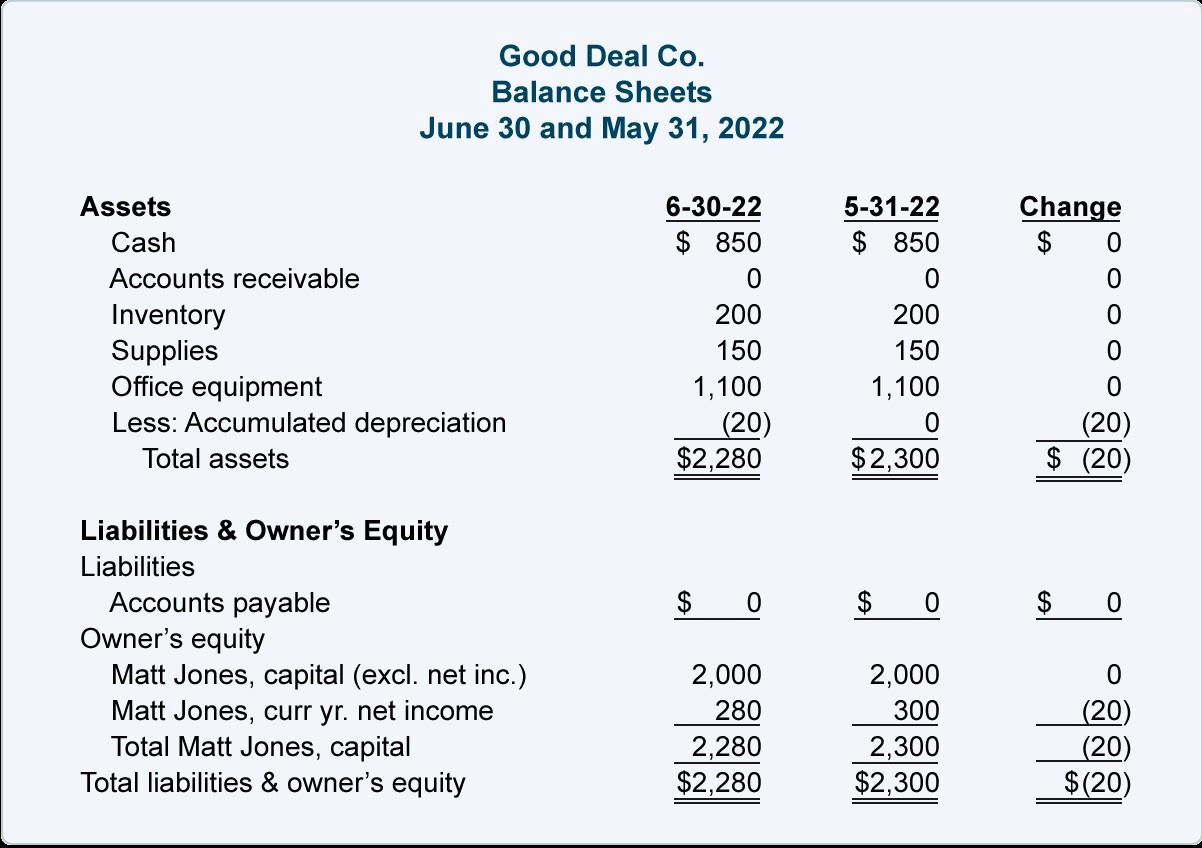

Finance
What Is Pre-Seed And Seed Funding?
Modified: January 17, 2024
Learn about pre-seed and seed funding in the realm of finance. Find out how these types of funding can kick-start your business.
(Many of the links in this article redirect to a specific reviewed product. Your purchase of these products through affiliate links helps to generate commission for LiveWell, at no extra cost. Learn more)
Table of Contents
- Introduction
- Overview of Pre-Seed Funding
- Key Characteristics of Pre-Seed Funding
- Advantages of Pre-Seed Funding
- Challenges in Securing Pre-Seed Funding
- Role of Pre-Seed Funding in Startup Development
- Differences Between Pre-Seed and Seed Funding
- Understanding Seed Funding
- Importance of Seed Funding for Startups
- Qualifications and Criteria for Seed Funding
- How to Secure Seed Funding
- Common Terms and Conditions in Seed Funding
- Conclusion
Introduction
In the world of startups and entrepreneurship, securing financial backing is essential for turning innovative ideas into reality. Two common types of funding that startups often seek are pre-seed funding and seed funding. These funding stages play a crucial role in the development and growth of early-stage ventures.
Pre-seed funding and seed funding provide the necessary capital to cover initial expenses and execute the early stages of a business plan. However, many people may be unfamiliar with these terms and their significance in the startup ecosystem. In this article, we will delve into the intricacies of pre-seed and seed funding, exploring their definitions, characteristics, and how they contribute to the success of startups.
Pre-seed funding is often the first formal round of financing that a startup receives. It typically occurs in the earliest stages of a startup’s development, sometimes even before the company is officially established. The purpose of pre-seed funding is to provide the initial financial resources needed to validate the business idea, conduct market research, and develop a minimum viable product (MVP).
Overview of Pre-Seed Funding
Pre-seed funding, as the name suggests, is the initial injection of capital that a startup receives to get off the ground. It is often sourced from the founders’ personal savings, friends, family, or angel investors who are willing to take a risk on a promising idea. Unlike traditional venture capital funding, pre-seed funding is typically smaller in amount and acquired in the early stages of a startup’s journey.
The purpose of pre-seed funding is to help startups prove their concept, build a prototype, and validate the market demand for their product or service. This type of funding plays a critical role in reducing the risk for future investors by demonstrating initial traction and potential for growth.
During the pre-seed stage, entrepreneurs focus on translating their vision into a tangible business model. They conduct market research, refine their target audience, and fine-tune their value proposition. This early funding allows startups to hire key team members, cover initial operational expenses, and invest in marketing efforts to gain early traction and user feedback.
Pre-seed funding rounds are often more informal compared to later funding stages. They may involve negotiation and agreement based more on trust and belief in the founding team rather than detailed financial projections. Startups receiving pre-seed funding are typically evaluated based on their founders’ experience, industry knowledge, and the uniqueness of their product or service.
It is important to note that securing pre-seed funding can be challenging. Investors understand the risks involved in investing at such an early stage, and therefore, they carefully evaluate startups based on their potential for growth and market viability. Founders need to effectively communicate their vision, demonstrate their passion, and showcase their ability to execute their business plan.
Key Characteristics of Pre-Seed Funding
Pre-seed funding is characterized by several key aspects that distinguish it from other funding stages. Understanding these characteristics is essential for startups seeking pre-seed funding and investors looking to support early-stage ventures. Here are some key characteristics of pre-seed funding:
- Early-stage financing: Pre-seed funding occurs in the very early stages of a startup’s development, often before the company is officially established. It is the first formal round of financing and provides the initial capital needed to validate the business idea and take the first steps towards execution.
- Lower funding amount: Compared to later funding rounds, pre-seed funding generally involves smaller investment amounts. This is because startups are in the early stages of their journey and have yet to prove their concept and attract larger funding sources.
- Validation of business idea: Pre-seed funding is crucial for startups to validate their business idea and market potential. It allows founders to conduct market research, build prototypes, and test their product or service with potential customers. This validation helps reduce the risk for future investors.
- Founders’ personal investment: In many cases, pre-seed funding comes from the founders’ personal savings or contributions from friends and family. This demonstrates the founders’ commitment to their business idea and their willingness to take on financial risks.
- High risk and reward: Investing in pre-seed startups is considered high-risk, high-reward. Since the startups are at an early stage, there is a higher chance of failure. However, successful pre-seed investments can yield significant returns if the startup grows and attracts larger funding rounds.
- Focus on team and vision: Since startups in the pre-seed stage have limited or no track record, investors heavily evaluate the founding team’s experience, skills, and vision. The team’s ability to execute the business plan and navigate challenges is key to securing pre-seed funding.
These characteristics underline the importance of pre-seed funding in supporting the early growth and development of startups. By providing the necessary capital and validation, pre-seed funding sets the stage for future funding rounds and enables startups to progress towards their goals.
Advantages of Pre-Seed Funding
Pre-seed funding offers numerous advantages for startups in their early stages of development. Understanding these advantages can help entrepreneurs make informed decisions about seeking pre-seed funding and investors evaluate the potential of supporting early-stage ventures. Here are some key advantages of pre-seed funding:
- Validation of business idea: Pre-seed funding allows startups to validate their business idea and test its viability in the market. By investing in market research and developing prototypes, startups can gather feedback from potential customers and make necessary adjustments to their offering.
- Early access to capital: Pre-seed funding provides startups with the initial capital they need to kickstart their operations. This early access to funds allows entrepreneurs to cover essential expenses such as product development, marketing initiatives, hiring key team members, and establishing a strong foundation for future growth.
- Attract larger funding: Successful pre-seed funding rounds can significantly increase the chances of attracting larger investments in future funding rounds. By demonstrating early market traction, startups become more appealing to venture capitalists and other investors who are looking for promising opportunities.
- Building a strong network: Pre-seed funding often comes from angel investors or early-stage venture capitalists who bring more than just capital to the table. These investors often have extensive networks and industry expertise, and their support can open doors to valuable connections, partnerships, and mentorship opportunities for startups.
- Securing top talent: With pre-seed funding, startups can attract experienced and talented individuals to join their team. The availability of resources to offer competitive salaries and incentives makes it easier to recruit individuals who can contribute to the growth and success of the startup.
- Elevating credibility: Pre-seed funding adds credibility to a startup, signaling to other investors, customers, and potential partners that the business has received external validation and support. This credibility can help startups build trust and establish relationships that are essential for their long-term success.
Overall, pre-seed funding plays a vital role in providing startups with the necessary resources to validate their business idea, attract talent, and build a solid foundation for growth. By leveraging the advantages of pre-seed funding, startups can increase their chances of success in the competitive landscape of entrepreneurship.
Challenges in Securing Pre-Seed Funding
While pre-seed funding offers significant advantages for startups, it is not without its challenges. Securing pre-seed funding can be a complex and daunting process, requiring entrepreneurs to navigate various hurdles. Here are some common challenges that startups face when seeking pre-seed funding:
- Limited track record: Startups in their early stages often lack a proven track record, making it challenging to convince investors of their potential for success. Investors typically prefer to see strong evidence of market validation and traction before committing to pre-seed funding.
- High level of competition: The startup ecosystem is highly competitive, with many entrepreneurs vying for limited pre-seed funding opportunities. Standing out from the crowd and capturing the attention of investors can be a tough task, especially if the market is saturated with similar ideas or products.
- Risk perception: Investing in pre-seed startups comes with inherent risks, as the majority of startups fail in their early stages. Investors must carefully assess the risks and potential rewards before committing their capital. Demonstrating a clear and compelling plan to mitigate those risks is crucial in securing pre-seed funding.
- Lack of market validation: Startups seeking pre-seed funding may struggle to demonstrate market validation or traction due to limited resources and a short operating history. Investors often look for evidence of product-market fit, customer feedback, and early revenue generation to minimize their risk, which can be a challenge for startups in the pre-seed stage.
- Founder credibility: Investors pay close attention to the founders’ credibility, expertise, and ability to execute the business plan. Startups with inexperienced or unproven founders may face skepticism from investors who prefer to back entrepreneurs with a successful track record or industry expertise.
- Negotiating fair valuations: Determining the valuation of a pre-seed startup can be challenging since there is limited financial data available. Startups need to strike a balance between securing the necessary funding while maintaining a fair valuation that aligns with their current stage of development.
Overcoming these challenges requires strategic planning, a well-crafted pitch, and perseverance. Startups should focus on building a strong value proposition, demonstrating market potential, and establishing relationships with potential investors. By addressing these challenges head-on, startups can increase their chances of securing pre-seed funding to fuel their early-stage growth.
Role of Pre-Seed Funding in Startup Development
Pre-seed funding plays a crucial role in the development and growth of startups. It serves as the initial fuel that allows entrepreneurs to transform their ideas into viable businesses. The role of pre-seed funding can be summarized as follows:
- Validating the business idea: Pre-seed funding provides startups with the necessary resources to test and validate their business idea. This stage allows entrepreneurs to conduct market research, refine their value proposition, and identify their target audience. By investing in product development and initial marketing efforts, startups can gather feedback and determine if their idea has market potential.
- Building a minimum viable product (MVP): Pre-seed funding enables startups to develop a minimum viable product (MVP) that demonstrates the core functionality of their product or service. This MVP can be used to attract early adopters, gather user feedback, and iterate the product based on customer needs. The insight gained from this process helps shape the startup’s future development strategy.
- Attracting talent and building a team: Pre-seed funding allows startups to hire key team members and build a strong foundation. By securing capital, startups can offer competitive salaries and incentives to attract top talent. A talented team is essential for executing the business plan, driving innovation, and navigating the challenges that arise during the early stages of a startup’s journey.
- Gaining market traction: Pre-seed funding provides startups with the necessary resources to gain initial market traction. With a well-funded marketing strategy, startups can create awareness, generate leads, and acquire early customers. Demonstrating early market traction is crucial for attracting future investors and building credibility in the industry.
- Preparing for future funding: Pre-seed funding sets the stage for future funding rounds. By showing progress and market validation during this early stage, startups can position themselves for larger funding opportunities in the future. The successful utilization of pre-seed funding can significantly influence a startup’s valuation and investment attractiveness in subsequent funding rounds.
- Laying the foundation for growth: Pre-seed funding provides startups with the necessary resources to establish a solid foundation for growth. It allows entrepreneurs to refine their business model, build strategic partnerships, and develop a roadmap for scaling their operations. The impact of pre-seed funding extends beyond the initial injection of capital, creating a strong framework for long-term success.
In summary, pre-seed funding is vital for startups as it validates their business idea, supports product development, attracts talent, generates market traction, and sets the stage for future growth. It plays a pivotal role in transforming a concept into a viable business and is a critical step in the journey of a startup.
Differences Between Pre-Seed and Seed Funding
Pre-seed funding and seed funding are distinct stages in the funding lifecycle of a startup. While they both provide capital to early-stage ventures, there are notable differences between the two. Understanding these differences can help entrepreneurs determine the most appropriate funding stage for their startup. Here are the key distinctions between pre-seed and seed funding:
- Timing: Pre-seed funding occurs in the earliest stages of a startup’s development, often before the company is officially established. Seed funding, on the other hand, typically follows pre-seed funding and is obtained once the business has gained some initial traction and market validation.
- Company stage: Pre-seed funding is typically obtained when a startup is still in the idea or concept stage. Seed funding, on the other hand, is secured when a startup has developed an MVP, attracted early customers, and has a clearer roadmap for growth.
- Funding amount: Pre-seed funding is generally smaller in amount compared to seed funding. Pre-seed funding is used to cover initial expenses such as market research, product development, and building the foundational team. Seed funding, on the other hand, provides more substantial capital to support scaling operations and expanding market reach.
- Investor expectations: Pre-seed funding investors often have a higher appetite for risk and are willing to back startups based on the founders’ vision and expertise. Seed funding investors, on the other hand, seek more concrete evidence of market validation, product-market fit, and early revenue generation. They expect the startup to have a clearer business model and a plan for sustainable growth.
- Milestone achievement: Pre-seed funding is focused on achieving key milestones such as validating the business idea, building an MVP, and securing initial market traction. Seed funding, on the other hand, aims to further scale and grow the startup, expand market reach, and solidify the business model.
- Investor type: Pre-seed funding is often sourced from personal savings, friends, family, and angel investors who are willing to take a risk on early-stage ventures. Seed funding, on the other hand, attracts more institutional investors, early-stage venture capitalists, and potentially corporate investors who are more interested in scaling startups with promising growth potential.
In summary, pre-seed funding and seed funding differ in terms of timing, company stage, funding amount, investor expectations, milestone achievement, and investor type. Startups need to carefully evaluate their stage of development and funding needs to determine which funding stage is most suitable for their specific circumstances.
Understanding Seed Funding
Seed funding is an integral part of the startup funding cycle, occurring after the pre-seed stage. It provides startups with the capital needed to further develop their products or services, expand operations, and gain market traction. Seed funding is often sought by startups that have already proven their concept and have initial traction in the market.
The primary purpose of seed funding is to support startups in scaling their operations, entering new markets, and attracting a larger customer base. It allows them to invest in marketing initiatives, hire additional team members, enhance their product offerings, or develop new features. Seed funding helps bridge the gap between the early-stage pre-seed funding and the later-stage funding rounds.
Seed funding rounds are typically larger compared to pre-seed funding rounds. Startups receiving seed funding have already demonstrated certain milestones, such as market validation, customer acquisition, revenue generation, or product-market fit. These achievements make them attractive to investors who are looking for opportunities with higher growth potential.
Seed funding is often provided by venture capital firms, angel investors, or early-stage institutional investors. In some cases, strategic partnerships or corporate entities may also invest in seed funding. These investors usually conduct thorough due diligence to assess the startup’s business model, market potential, competitive landscape, and growth strategy before making their investment decisions.
Startups seeking seed funding often go through a rigorous pitching and negotiation process. They need to present a compelling business plan, growth strategy, and roadmap for scaling their operations. Investors look for startups with a strong market opportunity, a differentiated product or service, and a capable founding team that can execute on their vision.
Securing seed funding is a significant milestone for startups. It not only provides the necessary capital for growth but also brings valuable industry expertise, mentorship, and networking opportunities. Seed funding lays the foundation for startups to continue their growth trajectory, attract larger funding in subsequent rounds, and ultimately achieve their long-term business goals.
Importance of Seed Funding for Startups
Seed funding plays a crucial role in the growth and success of startups. It provides the necessary capital and support for early-stage ventures to take their ideas to the next level. The importance of seed funding for startups can be summarized as follows:
- Fuel for growth: Seed funding serves as the fuel that allows startups to accelerate their growth. It provides the capital needed to scale operations, expand market reach, and invest in key areas such as product development, marketing, and hiring. This infusion of capital enables startups to take calculated risks and pursue opportunities for growth.
- Validation of market potential: Securing seed funding validates the market potential of a startup. Investors who participate in seed funding rounds conduct thorough due diligence and evaluate the startup’s market opportunity, competitive landscape, and growth potential. The investment acts as an endorsement, providing credibility and increasing the startup’s chances of attracting additional funding in the future.
- Access to expertise and resources: Along with the capital, seed funding often brings valuable expertise and resources to startups. Investors who participate in seed funding rounds have industry knowledge and networks that can benefit the startup. Startups can tap into this expertise, leverage the investor’s connections, and receive mentorship to navigate challenges and make informed decisions.
- Growth acceleration: Seed funding allows startups to accelerate their growth trajectory by investing in marketing, sales, and customer acquisition. With a well-funded marketing strategy, startups can raise awareness, generate leads, and acquire customers at a faster pace. This acceleration puts startups in a better position to compete in the market and gain a larger market share.
- Talent acquisition and retention: Seed funding enables startups to attract and retain top talent. With secure funding, startups can offer competitive salaries and incentives, providing the motivation for talented individuals to join the team. The ability to build a talented team is critical for executing the business plan, driving innovation, and meeting the evolving needs of the market.
- Proof of concept: Seed funding allows startups to further develop their minimum viable product (MVP) and prove the concept to potential customers and investors. With seed funding, startups can iterate their product, incorporate user feedback, and enhance features to meet market demands. This proof of concept serves as a strong foundation for future growth and attracts larger investments in subsequent funding rounds.
In summary, seed funding is of utmost importance for startups as it provides the necessary capital, validation, and resources to fuel their growth. It accelerates market traction, attracts top talent, and validates the market potential of the startup. Startups that secure seed funding position themselves for further success by positioning themselves for future funding rounds and positioning themselves for long-term growth.
Qualifications and Criteria for Seed Funding
Seed funding is a critical stage in the funding lifecycle of a startup. To qualify for seed funding, startups need to meet certain qualifications and criteria. While the specific requirements may vary based on the investors and funding ecosystem, here are some common qualifications and criteria that startups should consider:
- Market potential: Investors look for startups with a compelling market potential. Startups should have a clear understanding of their target market, the problem they are solving, and the size of the opportunity. Demonstrating a sizable and growing market, along with a unique value proposition, increases the attractiveness to potential seed investors.
- Proof of concept and traction: Startups seeking seed funding should have a proof of concept or MVP that demonstrates the feasibility and potential of their product or service. Showing traction in the form of early customer acquisition, revenue generation, or partnerships enhances the startup’s credibility and increases its chances of securing seed funding.
- Strong founding team: Investors place great emphasis on the founding team’s experience, skills, and expertise. Startups should showcase a strong and complementary team with relevant industry knowledge. Demonstrating the ability to execute the business plan and overcome challenges is crucial for attracting seed funding.
- Clear growth and monetization strategy: Seed funding investors expect startups to have a clear growth and monetization strategy. Startups should be able to articulate how they plan to scale their operations, expand their customer base, and generate revenue. Providing a clear roadmap and demonstrating a deep understanding of the market dynamics is essential for gaining investor confidence.
- Addressable market size: Startups should be able to articulate the size and potential of their addressable market. Investors look for startups that have identified a niche or untapped market with significant growth potential. A well-defined target market backed by data and market research helps to demonstrate the startup’s ability to capture a meaningful market share.
- Competitive advantage: Startups should have a clear competitive advantage that differentiates them from existing players in the market. Whether it’s through technology, intellectual property, unique partnerships, or a disruptive business model, startups need to outline their competitive edge and explain how it positions them for success.
- Financial projections and milestones: While startups in the seed stage may not have a long financial track record, they should be able to provide realistic financial projections and milestones. Demonstrating a clear understanding of key financial metrics, such as revenue projections, customer acquisition costs, and growth rates, helps investors assess the startup’s financial viability and potential return on investment.
It is important for startups to research and understand the specific qualifications and criteria of potential seed funding investors. By aligning their business with the expectations of investors, startups can maximize their chances of securing seed funding and propel their growth in the early stages.
How to Secure Seed Funding
Securing seed funding is an important milestone for startups, as it provides the necessary capital for growth and development. While the process of securing seed funding can be challenging, there are several key steps entrepreneurs can take to increase their chances of success. Here are some strategies to secure seed funding:
- Build a strong value proposition: Start by clearly defining your unique value proposition and how it addresses a market need. Investors look for startups with a compelling offering that stands out from competitors. Emphasize the unique features of your product or service and articulate how it solves a specific problem in the market.
- Create a solid business plan: Develop a comprehensive business plan that outlines your market analysis, target audience, competitive landscape, and growth strategy. Include financial projections that demonstrate the potential return on investment for investors. A well-structured and data-driven business plan can instill confidence in investors and showcase your understanding of the market opportunity.
- Build a strong founding team: Investors are not just investing in the product or service; they are also investing in the team behind it. Assemble a talented and experienced founding team with complementary skills. Highlight the expertise and track record of your team members to demonstrate their ability to execute the business plan and navigate challenges.
- Build relationships with potential investors: Seek out and network with potential seed investors in your industry. Attend investor conferences, pitch events, and networking functions to connect with investors and share your startup’s story. Building relationships early on can help establish trust and increase your chances of securing seed funding when you are ready to pitch.
- Create a compelling pitch: Craft a compelling pitch deck that clearly communicates your startup’s value proposition, market opportunity, growth potential, and financial projections. Tailor your pitch to each investor and highlight the key aspects that align with their investment thesis. Practice your pitch to ensure it is concise, engaging, and effectively conveys the potential of your startup.
- Show traction and market validation: Investors are more likely to invest in startups that have shown some level of traction and market validation. Acquire early customers, generate revenue, or build strategic partnerships to demonstrate that there is demand for your product or service. Showcasing these achievements can significantly increase your chances of securing seed funding.
- Research seed funding programs and platforms: Many seed funding programs and platforms exist that specifically support early-stage startups. Research and identify seed funding opportunities that align with your industry, stage of development, and funding requirements. These programs often provide not only capital but also mentorship, resources, and networking opportunities.
- Prepare for due diligence: Be prepared for the due diligence process that investors will conduct. Ensure your financial records are up to date, contracts and legal documents are in order, and that you have a clear understanding of your startup’s financials, metrics, and long-term vision. Being organized and transparent during due diligence can increase investor confidence and facilitate the funding process.
It’s important for startups to remember that securing seed funding is often a marathon, not a sprint. Persistence, resilience, and continuous improvement in pitching and refining your business strategy are key to attracting the right investors and securing the funding needed to fuel your startup’s growth.
Common Terms and Conditions in Seed Funding
Seed funding rounds involve negotiations between startups and investors to determine the terms and conditions of the investment. While these terms and conditions can vary based on the specific deal and investor, there are some common terms and conditions that are typically seen in seed funding agreements. Here are a few examples:
- Equity or convertible notes: Seed funding typically involves the issuance of equity or convertible notes. Equity means that investors receive shares of the company in exchange for their investment. Convertible notes, on the other hand, are loans that convert to equity at a later date, usually during a future funding round or a liquidity event.
- Valuation and dilution: The valuation of the startup is determined during seed funding. Startups and investors negotiate the company’s valuation, which affects the amount of equity investors will receive. Dilution refers to the reduction in ownership percentage of existing shareholders when new equity is issued.
- Voting rights: Seed investors typically receive voting rights that allow them to participate in important corporate decisions. The extent of these rights may vary, but common decisions include changes to articles of incorporation, election of directors, and approval of significant transactions.
- Board representation: In some cases, seed investors may require a seat on the startup’s board of directors. This gives the investor the ability to actively participate in high-level decision-making and provide guidance to the startup.
- Liquidation preference: Liquidation preference determines the order in which the proceeds from a sale or liquidation are distributed among shareholders. Seed investors may negotiate for a liquidation preference that ensures they receive their investment back before other shareholders in the event of a sale or liquidation.
- Anti-dilution provisions: Anti-dilution provisions protect early investors from dilution in the event of future funding rounds at a lower valuation. They provide investors with additional shares or a price adjustment to account for the decrease in valuation.
- Information rights: Seed investors often have the right to receive regular updates and financial reports from the startup. This allows them to stay informed about the company’s progress and make informed decisions regarding their investment.
- Restrictions on founder equity: Seed investors may impose restrictions on the founder’s ability to sell or transfer their equity without investor consent. This is done to align the interests of the founders and investors and to ensure founders are committed to the long-term success of the company.
- Founder vesting: Seed investors may require founders to vest their equity over a specific period. This ensures that founders remain committed to the startup and incentivizes them to stay and contribute to its growth.
- Right of first refusal: Seed investors may negotiate for a right of first refusal, which allows them to invest in future funding rounds before other investors or to maintain their ownership percentage by having the option to purchase shares from existing shareholders.
It’s important for startups to carefully review and negotiate these terms and conditions to ensure they align with their long-term goals and protect the interests of all parties involved. Consulting with legal and financial advisors can help startups navigate the complexities of seed funding agreements and make informed decisions.
Conclusion
Pre-seed and seed funding are critical stages in the funding lifecycle of startups. These funding stages provide the necessary capital and support to turn innovative ideas into successful businesses. Pre-seed funding helps startups validate their business ideas, build a minimum viable product, and attract early market traction. Seed funding, on the other hand, fuels startups’ growth by scaling operations, expanding market reach, and attracting top talent.
Securing pre-seed and seed funding can be challenging, as startups need to demonstrate market potential, traction, a strong founding team, and a clear growth strategy. Investors look for startups with a compelling value proposition, scalability, and a strong market opportunity. Startups should also carefully consider terms and conditions associated with seed funding, such as equity, dilution, voting rights, and liquidation preferences.
The importance of pre-seed and seed funding cannot be overstated. These funding stages not only provide the necessary capital but also bring valuable expertise, resources, and networking opportunities. They enable startups to validate their ideas, launch products, gain market traction, and position themselves for future success.
As startups embark on their journey to secure seed funding, it is crucial to build a strong value proposition, develop a solid business plan, and establish relationships with potential investors. By showcasing market validation, demonstrating traction, and articulating a clear growth strategy, startups can increase their chances of securing seed funding and fueling their growth in the competitive startup landscape.
Remember, the journey to securing seed funding is not always easy, and perseverance is key. Each step, from refining the business plan to pitching to investors, contributes to the growth and success of the startup. With the right strategy, mindset, and perseverance, startups can navigate the complexities of seed funding and set themselves on the path to long-term success.














